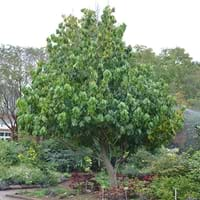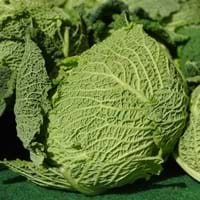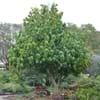Life Span
Annual and Perennial
Biennial
Origin
Northeastern United States, Mid-Atlantic United States, Southeastern United States, Canada
Southern Europe, Western Europe, Mediterranean
Types
Not Available
Not Available
Number of Varieties
Not Available
Habitat
Deep, Fertile bottom land, Hilly upland habitat, Well Drained
Cultivated Beds, Moist Soils
USDA Hardiness Zone
6-9
6-8
Sunset Zone
2a, 2b, 3a, 3b, 4, 5, 6, 7, 8, 9, 14, 18, 19, 20, 21
A1, A2, A3, H1, H2, 1a, 1b, 2a, 2b, 3a, 3b, 4, 5, 6, 7, 8, 9, 10, 11, 12, 13, 14, 15, 16, 17, 18, 19, 20, 21, 22, 23, 24
Habit
Oval or Rounded
Rosette/Stemless
Flower Color
Purple, Burgundy, Brown
Light Purple, Yellow
Flower Color Modifier
Bicolor
Bicolor
Fruit Color
Yellow, Green, Yellow green, Brown
Not Available
Leaf Color in Spring
Green, Dark Green
Green, Dark Green
Leaf Color in Summer
Green, Dark Green
Light Green, Blue Green
Leaf Color in Fall
Yellow, Copper, Orange Red
Light Green, Blue Green
Leaf Color in Winter
Not Available
Light Green, Blue Green
Leaf Shape
Oblong
Ovate elongated
Plant Season
Spring, Summer, Fall
Spring, Summer, Fall
Sunlight
Full Sun, Partial Sun, Partial shade
Full Sun, Partial Sun
Type of Soil
Clay, Loam, Sand
Loam, Sand
The pH of Soil
Acidic, Neutral
Acidic
Soil Drainage
Average
Well drained
Bloom Time
Early Spring, Spring
Spring, Late Spring, Early Summer
Tolerances
Not Available
Drought
Where to Plant?
Ground
Container, Ground
How to Plant?
Seedlings, Transplanting
Cuttings, Seedlings
Plant Maintenance
Medium
Medium
Watering Requirements
Requires regular watering, Requires watering in the growing season, Water Deeply
Requires regular watering
In Summer
Lots of watering
Lots of watering
In Spring
Moderate
Moderate
In Winter
Average Water
Average Water
Soil pH
Acidic, Neutral
Acidic
Soil Type
Clay, Loam, Sand
Loam, Sand
Soil Drainage Capacity
Average
Well drained
Sun Exposure
Full Sun, Partial Sun, Partial shade
Full Sun, Partial Sun
Pruning
Remove damaged leaves, Remove dead branches, Remove dead leaves, Remove dead or diseased plant parts, Requires little pruning
Remove damaged leaves, Remove dead branches, Remove dead leaves
Fertilizers
Magnesium sulphate, Nitrogen, Phosphate, Phosphorous, Potassium
All-Purpose Liquid Fertilizer
Pests and Diseases
Red blotch
Bacterial leaf spot, Bacterial soft rot, Beet armyworm, Cabbage looper, Cabbageworm, Flea Beetles, Fungal leaf spots
Plant Tolerance
Not Available
Drought
Flower Petal Number
Single
Single
Foliage Texture
Coarse
Bold
Foliage Sheen
Matte
Matte
Attracts
Birds, Butterflies
Bugs, Rabbits
Allergy
breathing problems, Dizziness, Itchiness, Nausea, Rash, Stomach pain, Swelling
Nausea
Aesthetic Uses
Not Used For Aesthetic Purpose
Not Available
Beauty Benefits
Good for skin and hair, Skin cleanser
Not Available
Environmental Uses
Air purification, Shadow Tree
Air purification
Medicinal Uses
Malaria, Rheumatism, Urine infections, Vomiting
Nutrients
Part of Plant Used
Flowers, Fruits, Leaves
Whole plant
Other Uses
Making Shampoo, Used As Food, Used for its medicinal properties
Used in chopped mixed salad, Used in curries, soups, stews
Used As Indoor Plant
No
No
Used As Outdoor Plant
Yes
Yes
Garden Design
Edible, Feature Plant, Fruit / Fruit Tree, Mixed Border, Shade Trees
Bedding Plant, Container, Edible, Herb / Vegetable
Botanical Name
ASIMINA triloba
Brassica oleracea
Common Name
Pawpaw
Alcosa Cabbaga, Savoy Cabbage
In Hindi
गंदा संयंत्र
Savoy Cabbage
In German
Papaya Pflanze
Wirsing
In French
usine de papaye
Savoy Cabbage
In Spanish
planta de la papaya
col de col rizada
In Greek
φυτό pawpaw
Savoy Cabbage
In Portuguese
planta mamão
Savoy Cabbage
In Polish
pawpaw roślin
Kapusta włoska
In Latin
quince herba
Brassica Sabaudiae
Phylum
Magnoliophyta
Embryophyta
Class
Magnoliopsida
Eudicotyledones
Order
Magnoliales
Brassicales
Family
Annonaceae
Brassicaceae
Genus
Asimina Adans
Brassica
Clade
Angiosperms, Magnoliids
Angiosperms, Eudicots, Rosids
Tribe
Not Available
Not Available
Subfamily
Not Available
Not Available
Number of Species
Not Available
Not Available
Importance of Pawpaw and Savoy Cabbage
Want to have the most appropriate plant for your garden? You might want to know the importance of Pawpaw and Savoy Cabbage. Basically, these two plants vary in many aspects. Compare Pawpaw and Savoy Cabbage as they differ in many characteristics such as their life, care, benefits, facts, etc. Every gardener must at least have the slightest clue about the plants he wants to plant in his garden. Compare their benefits, which differ in many ways like facts and uses. The medicinal use of Pawpaw is Malaria, Rheumatism, Urine infections and Vomiting whereas of Savoy Cabbage is Nutrients. Pawpaw has beauty benefits as follows: Good for skin and hair and Skin cleanser while Savoy Cabbage has beauty benefits as follows: Good for skin and hair and Skin cleanser.
Compare Facts of Pawpaw vs Savoy Cabbage
How to choose the best garden plant for your garden depending upon its facts? Here garden plant comparison will help you to solve this query. Compare the facts of Pawpaw vs Savoy Cabbage and know which one to choose. As garden plants have benefits and other uses, allergy is also a major drawback of plants for some people. Allergic reactions of Pawpaw are breathing problems, Dizziness, Itchiness, Nausea, Rash, Stomach pain and Swelling whereas of Savoy Cabbage have Nausea respectively. Having a fruit bearing plant in your garden can be a plus point of your garden. Pawpaw has showy fruits and Savoy Cabbage has no showy fruits. Also Pawpaw is flowering and Savoy Cabbage is not flowering . You can compare Pawpaw and Savoy Cabbage facts and facts of other plants too.





